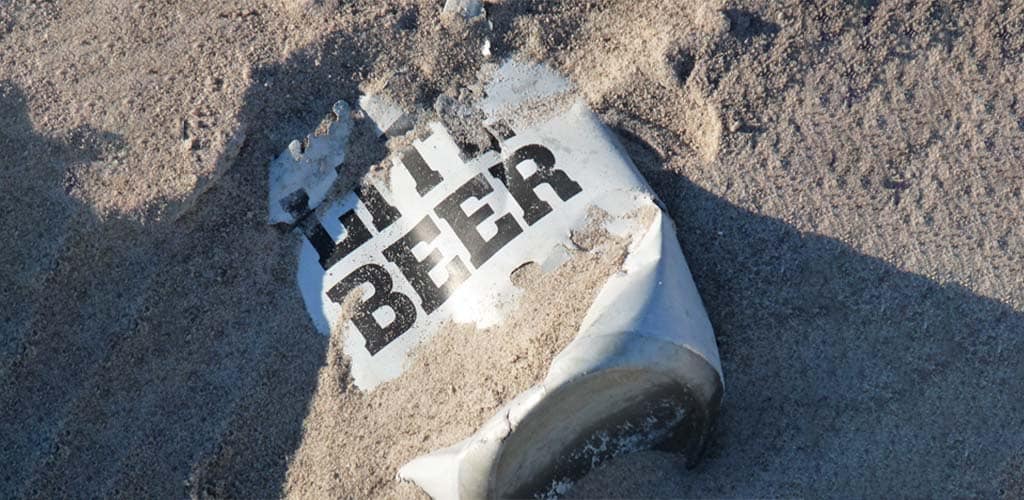In theory, a trademark can last “forever.”
For example, the winged hourglass logo of the Longines watch company, originally registered in Switzerland in 1889, is the oldest valid trademark in the International Registry at the World Intellectual Property Organization (WIPO). The oldest trademark in the US that’s still in use is believed to be the Underwood’s Deviled Ham devil logo, registered in 1870.
Other trademarks are even older, pre-dating the modern system of trademark registration. For example, Stella Artois beer claims the continuous use of its mark since 1366.
A trademark can “die” if it’s abandoned (no longer used in commerce), and it can be “killed” if it’s the victim of “genericide.”
As Cornell Law School explains,
Genericide refers to the gradual process of a trademarked term becoming generic through use by the common individual. When a term becomes generic, the term cannot receive a trademark nor can current trademarks be enforced. This process can be harmful to companies, but they do not have much control over how the common person refers to their trademarked products. For example, escalator was originally a protected trademark used to designate the moving stairs manufactured by a specific company. Over time, the common individual used the term to refer to any moving stairs and thus lost its trademark protection. Other examples of trademarks that have become generic terms are lite beer, soft soap, and cola.
As the International Trademark Association (INTA) explains, brands can try to avoid genericide by taking the following steps:
- Develop an internal “Best Practices to Avoid Genericide of ______” while the brand is still in development.
- Prepare a standard, written explanation for correct usage of your mark that can easily be distributed to third parties, such as licensees or general consumers, when incorrect usage is found.
- Hire an experienced search vendor to monitor print and online publications and the Internet to identify improper uses of your mark.
- Consider using the ® registration symbol (or the TM/SM symbol for unregistered trademarks).
- Use good judgment when approving quirky advertising and promotional materials; such uses may inadvertently dilute your own mark by confusing the public about correct usage.
- Don’t forget to educate individuals within your organization and/or supply chain, such as distributors and dealers.
- Keep detailed marketing records so that you can prove “acquired distinctiveness” if necessary.
A proposed mark can also be rejected for federal trademark registration if it’s considered generic by the US Patent and Trademark Office (USPTO).
Trademarks are meant to be “distinctive,” to distinguish the goods or services of one provider from another. Distinctiveness is often described in terms of a spectrum, from strong to weak.
Arbitrary marks are words or symbols in common usage that are applied arbitrarily to a product or service – for example, Apple brand computers or Amazon brand online shopping.
Fanciful marks are made-up words, like Kodak.
Suggestive marks suggest a quality of the product, like London Fog raincoats.
Merely Descriptive marks simply describe a feature or characteristic of the product.
Primarily Geographically Descriptive marks state where the product comes from.
Personal Name Marks can be problematic because more than one person may have the same name.
Generic Terms include words like “lite” for low-calorie beer.
The USPTO used to require “clear evidence” that a proposed trademark was generic before refusing to register it. In May of this year, the rule was changed so that trademark examiners only need to have a “reasonable predicate” (that is, a reasonable basis) for refusing the registration.
As the USPTO notes,
This revision does not change the nature or types of evidence needed to demonstrate genericness. Examining attorneys still consider the term’s primary significance to consumers (i.e., that the relevant consumers would use or understand the applied-for matter as indicating a class of goods or services with which it is used). Likewise, the sources of relevant evidence continue to include “dictionaries, usage by consumers and competitors, and any other source of evidence bearing on how consumers perceive a term’s meaning,” including relevant and probative consumer surveys.
Just like the haiku above, we like to keep our posts short and sweet. Hopefully, you found this bite-sized information helpful. If you would like more information, please do not hesitate to contact us here.


